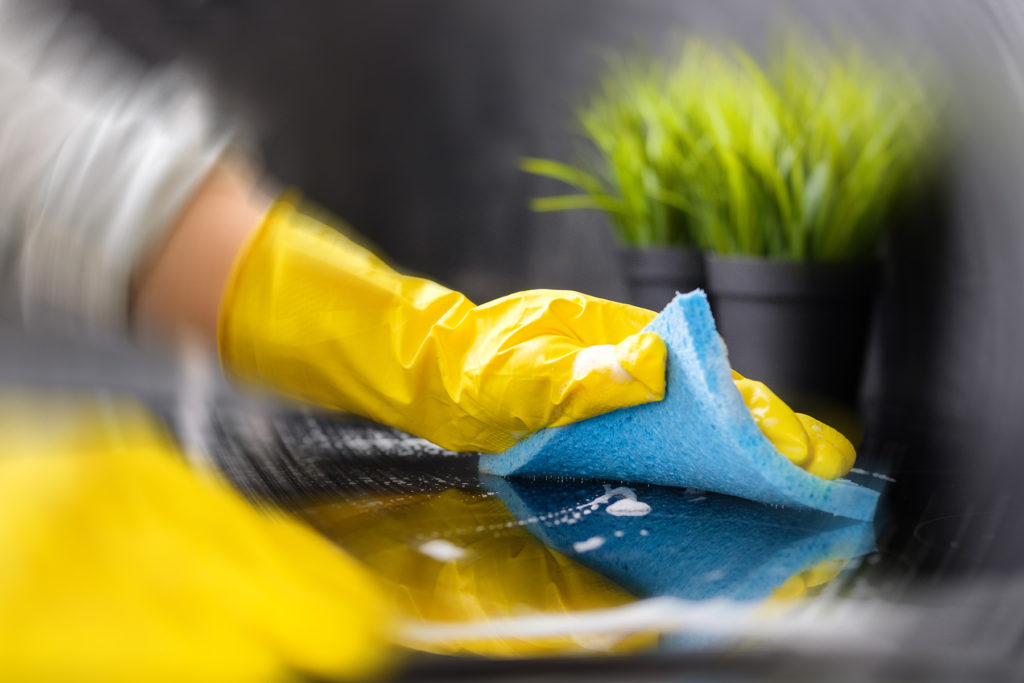Commercial Biohazard Disinfectant
The average Joe often uses the terms cleaning and disinfection interchangeably. However, commercial biohazard remediation teams know that these two terms refer to two different steps in the remediation of biohazards.
Call ( 415) 533-4993 now to get an estimate.
Cleaning refers to the initial removal of all visible dirt on a surface. While some cleaning products can disinfect, in general they aim to reduce numbers of microbes to a level where disinfection can be successful.

Disinfection can refer to multiple different practices within the remediator’s skillset, such as sanitizing and sterilization. Disinfection is successful when 99.99% of microbes are eradicated or rendered inactive. Depending on the nature of the biohazard, different disinfection products and procedures may be utilized to make the contaminated area safe for use.
Within the Office, Infection Transmission Occurs Because…
People inhale the respiratory droplets of infected parties and intake airborne particles.
People have direct contact with bodily fluids. This can occur in office restrooms, and those tasked with cleaning the fluids.
Contact with contaminants that have been deposited on surfaces. Computer equipment and phones can pose a high-risk of this.
Chemical Disinfectants
While most homes and businesses will use bleach or a similar derivative product to disinfect on the day-to-day, biohazard teams use specific disinfectants to ensure decontamination is achieved. Common chemicals used include:
Alcohol
Chlorine
Formaldehyde
Glutaraldehyde
Hydrogen Peroxide (bleach)
Iodophors
OPA
Peracetic Acid
Phenolics
Quaternary Ammonium
Alcohol
Ethyl Alcohol and Isopropyl Alcohol can be used to disinfect bacterial contamination and do have a level of effectiveness against diseases such as tuberculosis. They can destroy some fungi and viruses, but are unable to destroy spores. They need to be used in a high-concentration solution of between 60-90% to be effective.
Chlorine (And other Chlorine Compounds)
The most common disinfectant in this category are hypochlorites, which can be found in household bleach. They are able to remove fixed or dead organisms as well as biofilms. One of the biggest benefits of hypochlorites is that they are inexpensive.
Formaldehyde
Formaldehyde can be used to both disinfect and sterilize and can be found in both liquid and gas form. Formaldehyde is effective against bacteria, fungi, viruses, and spores. As it is a carcinogen it needs to be handled safely in the workplace.
Glutaraldehyde
Glutaraldehyde is used as a high-level disinfectant by biohazards cleanup crews, and can also be used to sterilize.
Hydrogen Peroxide
Hydrogen Peroxide can be used to destroy germs, bacteria, viruses, fungi, and spores. Hydrogen Peroxide can be used as a high-level disinfectant in elevated concentrations.
Iodophors
Iodophors are commonly used to disinfect skin and tissue but are sometimes used to disinfect surfaces also.
OPA
OPA (Ortho-phthalaldehyde)is a type of high-level disinfectant used by biohazard cleanup crews.
Peracetic Acid
Peracetic Acid can be used to provide rapid action against all types of microorganisms. It leaves no residue and doesn’t have harmful decomposition. It can corrode metal, however.
Phenolics
Disinfectants containing Phenol are most commonly used in medical settings.
Quaternary Ammonium
Compounds containing quaternary ammonium are commonly used as a disinfectant. They are commonly used in hospital settings to disinfectant equipment.
Trust the Professionals
While many of these cleaning products are available over the counter, that doesn’t mean biohazard disinfecting is simple. When you have need of biohazard cleaning and removal, it’s important to reach out to the professionals that have the training and equipment necessary to ensure the best results possible.





